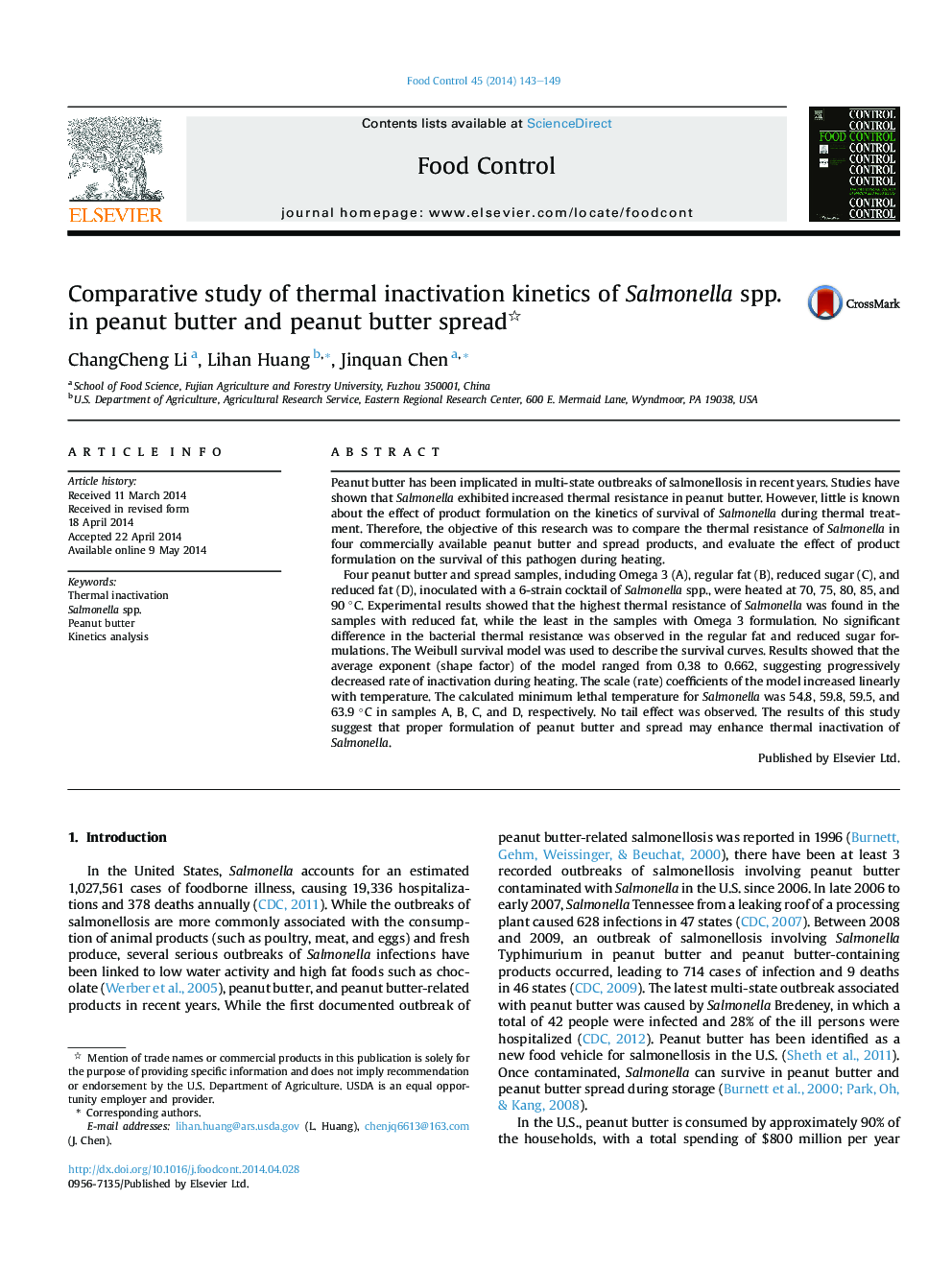| کد مقاله | کد نشریه | سال انتشار | مقاله انگلیسی | نسخه تمام متن |
|---|---|---|---|---|
| 6391625 | 1628417 | 2014 | 7 صفحه PDF | دانلود رایگان |

- Survival of Salmonella spp. in different peanut butter products was investigated.
- Kinetic models were developed for survival of Salmonella spp.
- Salmonella spp. were more heat resistant in reduced fat peanut spread.
- Salmonella spp. were least resistant in peanut butter with Omega 3 fatty acid.
- A 5 log reduction of Salmonella spp. in peanut butter products can be achieved.
Peanut butter has been implicated in multi-state outbreaks of salmonellosis in recent years. Studies have shown that Salmonella exhibited increased thermal resistance in peanut butter. However, little is known about the effect of product formulation on the kinetics of survival of Salmonella during thermal treatment. Therefore, the objective of this research was to compare the thermal resistance of Salmonella in four commercially available peanut butter and spread products, and evaluate the effect of product formulation on the survival of this pathogen during heating.Four peanut butter and spread samples, including Omega 3 (A), regular fat (B), reduced sugar (C), and reduced fat (D), inoculated with a 6-strain cocktail of Salmonella spp., were heated at 70, 75, 80, 85, and 90 °C. Experimental results showed that the highest thermal resistance of Salmonella was found in the samples with reduced fat, while the least in the samples with Omega 3 formulation. No significant difference in the bacterial thermal resistance was observed in the regular fat and reduced sugar formulations. The Weibull survival model was used to describe the survival curves. Results showed that the average exponent (shape factor) of the model ranged from 0.38 to 0.662, suggesting progressively decreased rate of inactivation during heating. The scale (rate) coefficients of the model increased linearly with temperature. The calculated minimum lethal temperature for Salmonella was 54.8, 59.8, 59.5, and 63.9 °C in samples A, B, C, and D, respectively. No tail effect was observed. The results of this study suggest that proper formulation of peanut butter and spread may enhance thermal inactivation of Salmonella.
Journal: Food Control - Volume 45, November 2014, Pages 143-149